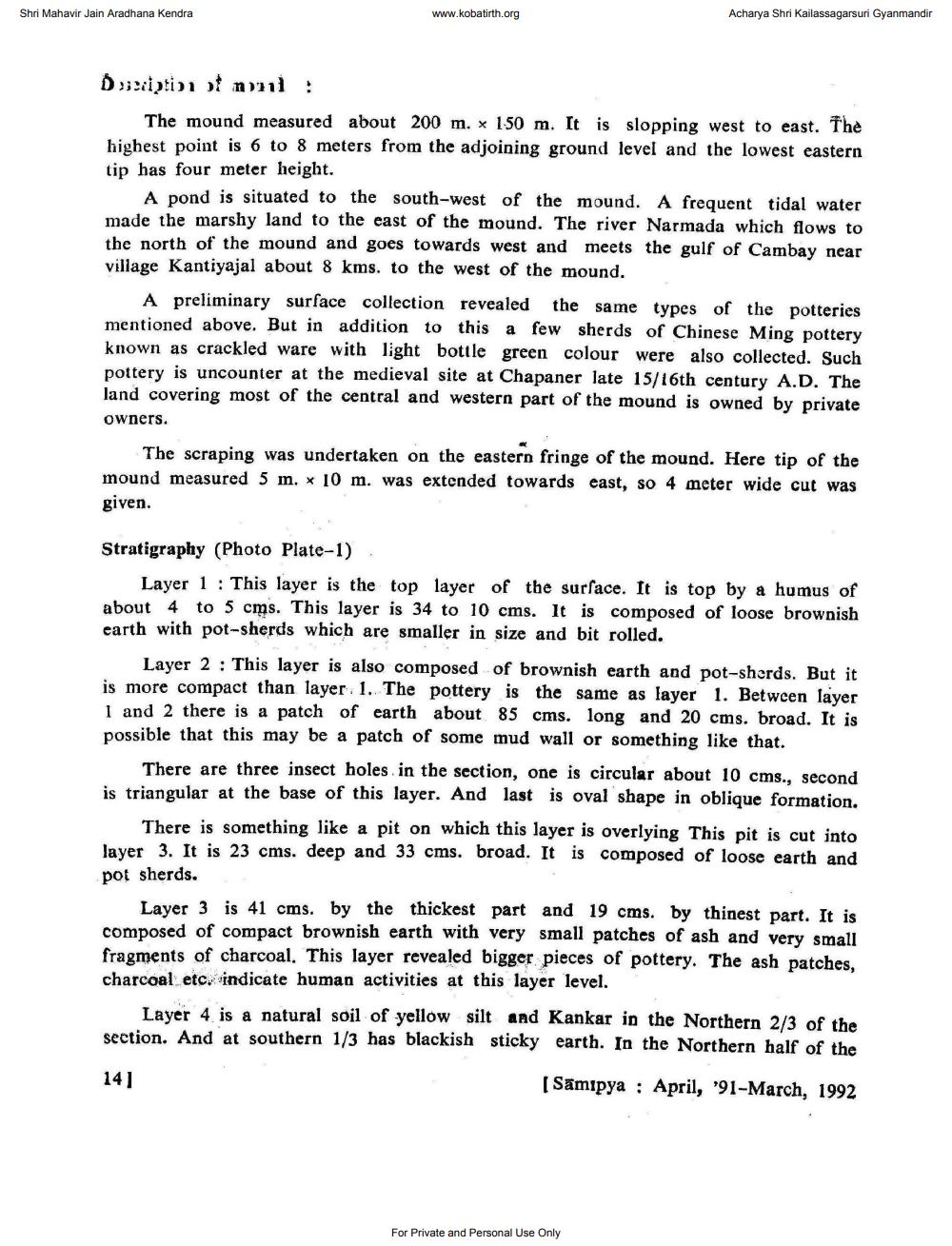________________
Shri Mahavir Jain Aradhana Kendra
Acharya Shri Kailassagarsuri Gyanmandir
www.kobatirth.org
دنبند زره
:nil
The mound measured about 200 m. x 150 m. It is slopping west to east. The highest point is 6 to 8 meters from the adjoining ground level and the lowest eastern tip has four meter height.
A pond is situated to the south-west of the mound. A frequent tidal water made the marshy land to the east of the mound. The river Narmada which flows to the north of the mound and goes towards west and meets the gulf of Cambay near village Kantiyajal about 8 kms. to the west of the mound.
A preliminary surface collection revealed the same types of the potteries mentioned above. But in addition to this a few sherds of Chinese Ming pottery known as crackled ware with light bottle green colour were also collected. Such pottery is uncounter at the medieval site at Chapaner late 15/16th century A.D. The land covering most of the central and western part of the mound is owned by private owners.
The scraping was undertaken on the eastern fringe of the mound. Here tip of the mound measured 5 m. x 10 m. was extended towards east, so 4 meter wide cut was given.
Stratigraphy (Photo Plate-1)
Layer 1 : This layer is the top layer of the surface. It is top by a humus of about 4 to 5 cms. This layer is 34 to 10 cms. It is composed of loose brownish earth with pot-sherds which are smaller in size and bit rolled.
Layer 2 : This layer is also composed of brownish earth and pot-sherds. But it is more compact than layer. 1. The pottery is the same as layer 1. Between layer 1 and 2 there is a patch of earth about 85 cms. long and 20 cms. broad. It is possible that this may be a patch of some mud wall or something like that.
There are three insect holes in the section, one is circular about 10 cms., second is triangular at the base of this layer. And last is oval shape in oblique formation.
he earth and P1. Between. It is
There is something like a pit on which this layer is overlying This pit is cut into laver 3. It is 23 cms. deep and 33 cms. broad. It is composed of loose earth and pot sherds.
Layer 3 is 41 cms. by the thickest part and 19 cms. by thinest part. It is composed of compact brownish earth with very small patches of ash and very small fragments of charcoal. This layer revealed bigger pieces of pottery. The ash patches, charcoal etc, vindicate human activities at this layer level.
Layer 4 is a natural soil of yellow silt and Kankar in the Northern 2/3 of the section. And at southern 1/3 has blackish sticky earth. In the Northern half of the
141
[Samipya : April, '91-March, 1992
For Private and Personal Use Only




